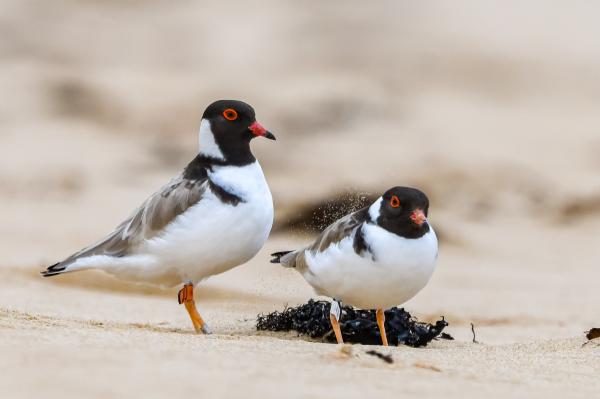If you’ve been outside enjoying the spring sunshine you can’t have missed the bustling nesting activity of our local birds preparing for the arrival of their young.
This includes pairs of hooded plovers all along the Bellarine coastline. Now, if the word ‘plover’ instills fear into your heart and brings images of the ferociously protective, swooping, spur-toting guardians of your nature strip, we’re talking about a different kind of plover.
Hooded plovers (hoodies) couldn’t take a more opposite approach to rearing their young than their much larger and more aggressive namesakes.
Which unfortunately, as beach-nesting birds, in a world where they must share their habitat with a beach-loving human population and their canines, is their downfall, and why they are critically endangered.
According to Andrea Dennett, coordinator of the Bellarine Friends of the Hooded Plover, the statistics are grim.
“The chance of a hoodie egg becoming an adult bird is only 2.5 percent,” she said.
“And the chance of a chick surviving is 20 per cent.
“They are extremely vulnerable when they are flightless for the first 35 days of their lives. But once they fledge, their chance of survival increases markedly to 55 percent.”
When threatened, hoodie parents run from their nest, a mere scrape in the sand above the high-water mark or dunes, and try to ‘lead’ human or other threats away.
They may even feign injury, often a broken wing display, to distract the threat. That means their eggs are left unattended on the sand for predators to steal.
Magpies, seagulls, ravens are culprits or they can be stepped on by unsuspecting humans or dogs or horses, or exposed to the elements.
Parents will signal chicks to hide by staying still, if they are very young, or if they are older, by running to safety in the dunes. They starve because they spend all their time running from threats when they should be feeding at the water’s edge.
“Small changes to our behaviour on beaches during the summer can protect our hoodies,” Ms Dennett said.
“If we avoid walking on the high sand or dunes area and keep our dogs on a lead in the designated signed areas, we can absolutely make a difference to the hoodie population.”
More information or how to become a volunteer contact hoodedplover@birdlife.org.au







